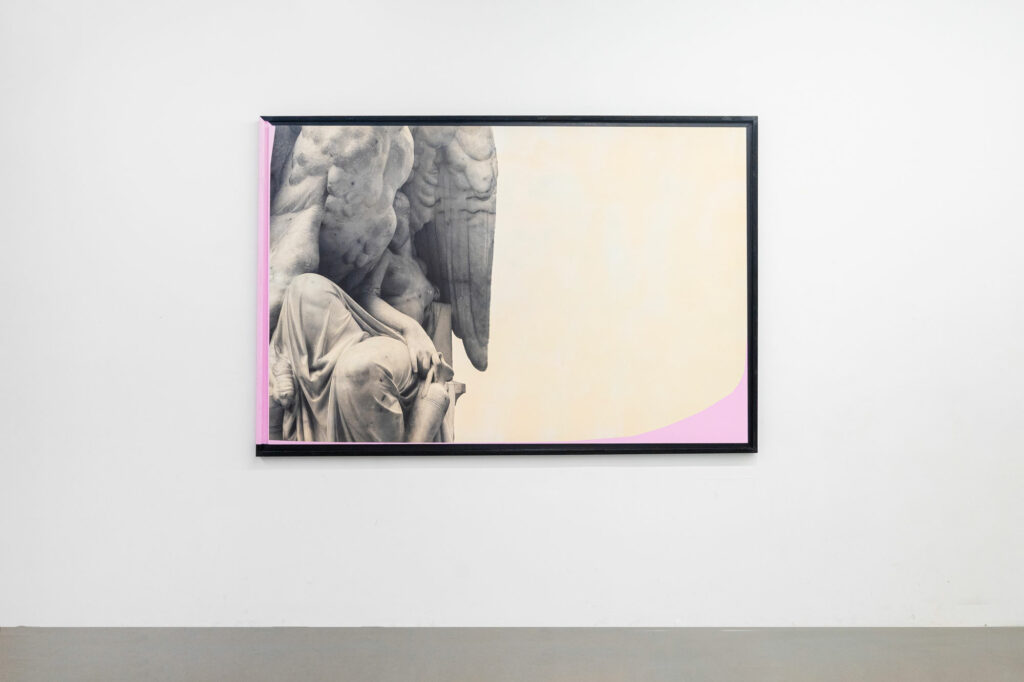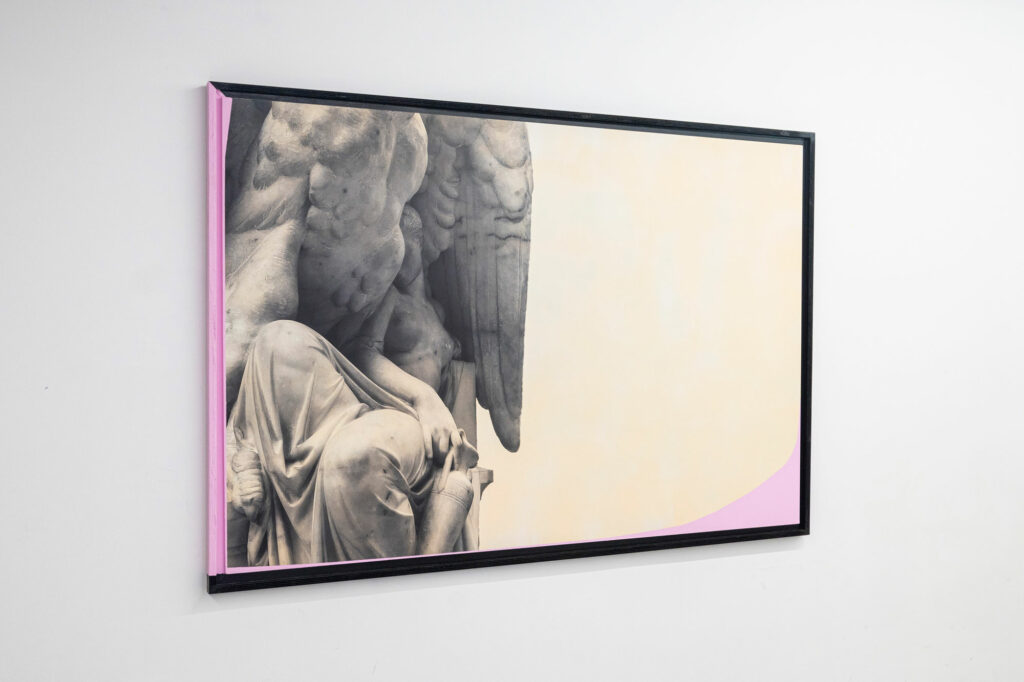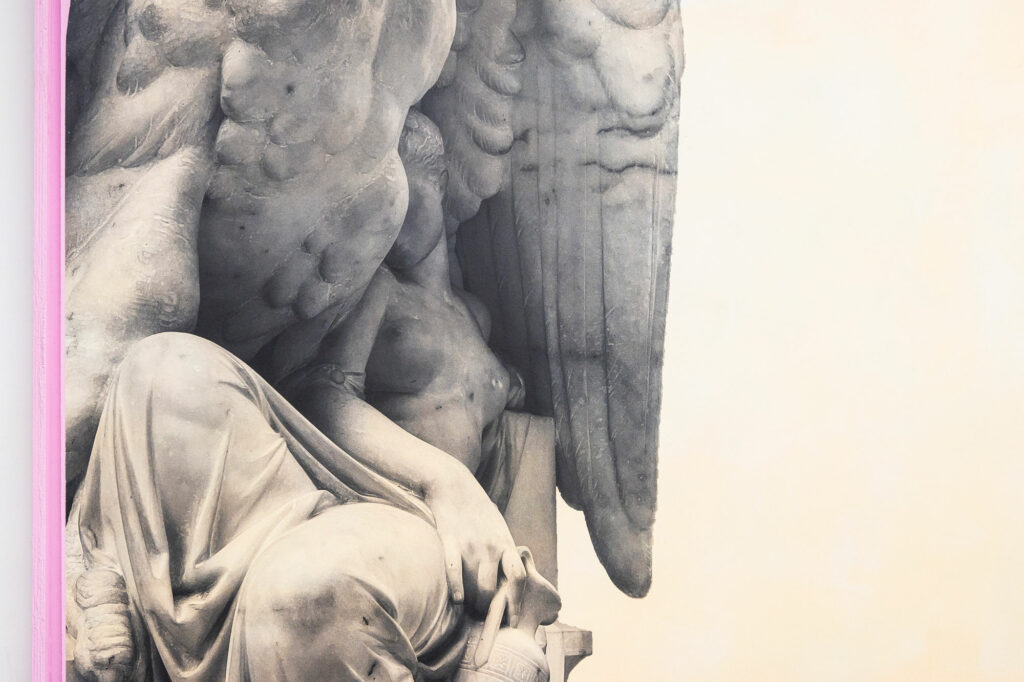À partir d’une photographie de la sculpture en marbre « Hébé endormie » de Albert-Ernest Carrier-Belleuse commandée par l’état français en 1869, Léo Fourdrinier s’intéresse à la circulation et au réemploi de la mythologie grecque comme outil de propagande dans l’Histoire. Dans la mythologie grecque, Hébé, fille de Zeus et de son épouse Héra, a pour fonction de servir aux dieux de l’Olympe le nectar et l’ambroisie qui leur assurent l’immortalité. Carrier-Belleuse a représentait la jeune déesse paisiblement endormie, blottie sous l’aile protectrice de son père, le roi des dieux, qui a pris la forme d’un aigle majestueux. Cet oiseau étant aussi un emblème impérial, on peut voir dans la sculpture de Carrier-Belleuse une allégorie du Second Empire protégeant la France.
Based on a photograph of Albert-Ernest Carrier-Belleuse’s marble sculpture ‘Hébé endormie’, commissioned by the French state in 1869, Léo Fourdrinier looks at the circulation and reuse of Greek mythology as a propaganda tool in history. In Greek mythology, Hebe, the daughter of Zeus and his wife Hera, was responsible for serving the gods of Olympus the nectar and ambrosia that ensured their immortality. Carrier-Belleuse has depicted the young goddess peacefully asleep, nestling under the protective wing of her father, the king of the gods, who has taken the form of a majestic eagle. As this bird is also an imperial emblem, Carrier-Belleuse’s sculpture can be seen as an allegory of the Second Empire protecting France.



